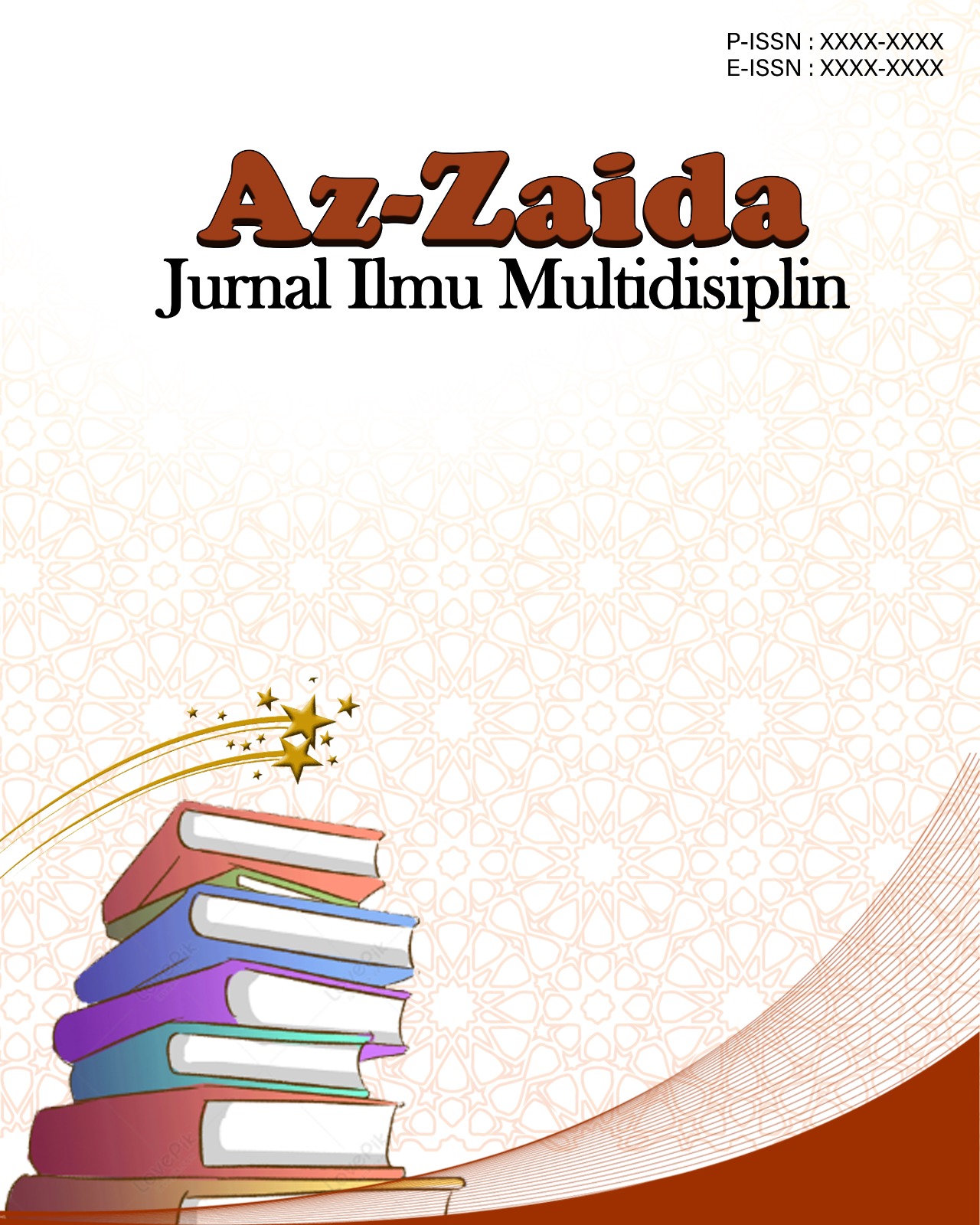PENYAKIT NABI AYYUB DALAM PERSPEKTIF I'JAZ TIBBI: ANALISIS MEDIS QUR’ANI DAN DIAGNOSA LEPRA
Keywords:
Nabi Ayyub, i‘jāz ṭibbī, lepra, tafsir medis Al-Qur’anAbstract
Kisah Nabi Ayyub ‘Alaihissalām dalam Al-Qur’an menggambarkan teladan kesabaran, keimanan, dan penyerahan diri sepenuhnya kepada Allah ketika menghadapi cobaan penyakit yang berkepanjangan. Artikel ini berfokus pada analisis penyakit yang dialami Nabi Ayyub dari sudut pandang i‘jāz ṭibbī (kemukjizatan ilmiah dalam bidang medis), dengan meninjau ayat-ayat Qur’ani, pandangan para mufassir, serta keterkaitannya dengan temuan medis modern. Penelitian dilakukan menggunakan metode studi kepustakaan dengan pendekatan tafsir tematik (maudhu‘i), analisis kebahasaan, serta kajian komparatif antara tafsir klasik dan penafsiran ilmiah yang dikemukakan Sayyid al-Jumaili. Hasil kajian menunjukkan bahwa penyakit Nabi Ayyub bersifat kronis, tidak mengganggu fungsi organ vital, namun menimbulkan penderitaan fisik dan psikologis yang sangat berat, terutama pada bagian tubuh luar. Dari perspektif kedokteran, gejala tersebut lebih mendekati lepra (juzām), sebagaimana ditunjukkan dalam literatur medis dan sejarah penyakit. Sementara itu, metode penyembuhan Qur’ani dalam QS. Shād: 42, yaitu dengan mandi dan meminum air sejuk, merepresentasikan kombinasi terapi eksternal dan internal yang sejalan dengan prinsip pengobatan modern terhadap penyakit kulit. Temuan ini menegaskan bahwa kisah Nabi Ayyub tidak hanya mengandung pesan spiritual, melainkan juga menyimpan nilai i‘jāz ṭibbī yang relevan dengan ilmu kedokteran kontemporer.
References
Al-Jumaili, Sayyid. Al-I‘jāz al-Ṭibbī fī al-Qur’ān al-Karīm. Baghdad: Dār al-Ḥurriyyah, 2005.
Al-Jumaili, Sayyid. I‘jāz Ṭibbī fī Qur’ān al-Karīm. Beirut: Dār al-Fikr, 2001.
Al-Miṣrī, Ahmad. “Al-Tafsīr al-‘Ilmī wa I‘jāz al-Qur’ān: Dirāsah Taṭbīqiyyah.” Majallat al-Dirāsāt al-Islāmiyyah 24, no. 2 (2018): 45–47.
Al-Qurṭubī. Al-Jāmi‘ li Aḥkām al-Qur’ān. Juz 11. Kairo: Dār al-Kutub al-Miṣriyyah, 1964.
Al-Qurṭubī. Al-Jāmi‘ li Aḥkām al-Qur’ān. Juz 15. Beirut: Dār al-Kutub al-‘Ilmiyyah, 2006.
Al-Rāzī. Mafātīḥ al-Ghayb. Juz 23. Beirut: Dār al-Fikr, 1981.
Al-Ṭabarī. Jāmi‘ al-Bayān fī Ta’wīl Āy al-Qur’ān. Juz 17. Kairo: Dār Hijr, 2001.
Al-Suyūṭī, Jalāl al-Dīn. Al-Durr al-Manthūr fī al-Tafsīr bi al-Ma’thūr. Beirut: Dār al-Fikr, 2003.
Al-Zindānī, A. Y. “The Scientific Miracles of the Holy Qur’an.” Journal of Islamic Medical Association of North America (JIMA) 18, no. 1 (1986): 9–13.
Becker, R. O., & Seldon, G. The Body Electric: Electromagnetism and the Foundation of Life. New York: William Morrow, 1985.
Britton, W. J., & Lockwood, D. N. “Leprosy.” The Lancet 363, no. 9416 (2004): 1209–1219.
Cambau, E., et al. “Drug resistance in leprosy: results of the first prospective open survey conducted by a WHO surveillance network for the period 2009–15.” The Lancet Infectious Diseases 18, no. 2 (2018): 191–201.
Ibnu Katsīr. Tafsīr al-Qur’ān al-‘Aẓīm. Juz 5. Beirut: Dār al-Ma‘rifah, 1997.
Ibnu Katsīr. Tafsīr al-Qur’ān al-‘Aẓīm. Juz 5. Beirut: Dār al-Kutub al-‘Ilmiyyah, 1999.
Ibnu Katsīr. Tafsīr al-Qur’ān al-‘Aẓīm. Juz 5. Kairo: Dār al-Ḥadīts, 1999.
Ironson, G., et al. “Spirituality and Religiousness Are Associated with Long-Term Psychological Adjustment and Reduced Cortisol Levels in People with HIV.” Annals of Behavioral Medicine 24, no. 1 (2002): 34–48.
Jacobson, R. R., & Krahenbuhl, J. L. “Leprosy.” The Lancet 353, no. 9153 (1999): 655–660.
Jopling, D. N. “A History of Leprosy.” Transactions of the Royal Society of Tropical Medicine and Hygiene 87, no. 1 (1993): 1–3.
Koenig, H. G. “Religion, Spirituality, and Health: The Research and Clinical Implications.” ISRN Psychiatry 2012 (2012): 278730.
Lastória, J. C., & Abreu, M. A. M. “Leprosy: A Review of Laboratory and Therapeutic Aspects.” Anais Brasileiros de Dermatologia 89, no. 2 (2014): 205–218.
Lockwood, D. N. “Leprosy: New Insights into an Old Disease.” BMJ 324, no. 7352 (2002): 1035–1036.
Lockwood, D. N. J., & Suneetha, S. “Leprosy: Too Complex a Disease for a Simple Elimination Paradigm.” Bulletin of the World Health Organization 83, no. 3 (2005): 230–235.
Lockwood, D. N. J. “Leprosy—Clinical Aspects.” Transactions of the Royal Society of Tropical Medicine and Hygiene 94, no. 6 (2000): 633–640.
Popkin, B. M., D’Anci, K. E., & Rosenberg, I. H. “Water, Hydration, and Health.” Nutrition Reviews 68, no. 8 (2010): 439–458.
Rāghib al-Aṣfahānī. Mufradāt Alfāẓ al-Qur’ān. Beirut: Dār al-Ma‘rifah, 2009.
Robbins, G., et al. “Ancient skeletal evidence for leprosy in India (2000 B.C.).” PLoS ONE 4, no. 5 (2009): e5669.
Scollard, D. M., et al. “The Continuing Challenges of Leprosy.” Clinical Microbiology Reviews 19, no. 2 (2006): 338–381.
Silva, A., et al. “Hydrotherapy and Wound Healing: Clinical Evidence.” Journal of Wound Care 28, no. 5 (2019): 293–301.
Tsutsumi, A., et al. “Depressive status of leprosy patients in Bangladesh: association with self-perception of stigma.” Leprosy Review 75, no. 1 (2004): 57–66.
Walker, S. L., & Lockwood, D. N. “Leprosy.” BMJ 341 (2010): c6545.
Walker, S. L., & Lockwood, D. N. “Leprosy.” Clinical Dermatology 25, no. 2 (2007): 165–172.
World Health Organization (WHO). “Leprosy: Key Facts.” WHO Official Report, 2023. Diakses 15 Agustus 2025. https://www.who.int/news-room/fact-sheets/detail/leprosy.
Guidelines Development Group,. Guidelines for the Diagnosis, Treatment and Prevention of Leprosy. Geneva: World Health Organization, 2020.
World Health Organization. “Global Leprosy Update.” Weekly Epidemiological Record 93 (2018): 445–456.
World Health Organization. “Leprosy: Fact Sheet.” WHO, 2021. https://www.who.int/news-room/fact-sheets/detail/leprosy.






